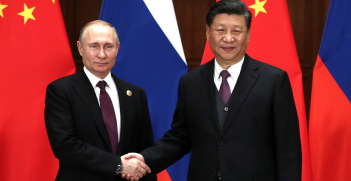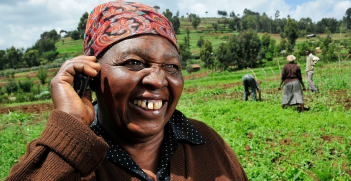Changing Norms and Ideas about Reproduction Among Women in China

There is a slow moving but nevertheless vibrant feminist awakening in China on the issue of women’s reproductive rights. For the party and state, meeting these demands while also managing unwanted demographic decline is an unlikely challenge.
According to a report of the National Bureau of Statistics of China (NBS) released in January 2023, China’s national population was 1411.75 million by the end of 2022, 850,000 less than in 2021. The annual birth rate was 6.77 per thousand, a decrease of 0.75 per thousand compared to 2021. This was lower than the death rate, which rose by 0.19 percentage points from the previous year to 7.37 per thousand. This was the first time in the People’s Republic of China’s 60-year history that the population growth rate has begun to drop, which has raised alarms enough for the government to vow to solve the “demographic crisis.”
In recent years, we have witnessed a series of population policy changes from the Chinese government, marked by a complete U-turn from population control towards pro-natalist policies. In 2015, the Chinese government replaced the One Child Policy with a universal Two child policy and later allowed (in 2021) each couple to have three children to boost the birth rate. Initially, the eased policies applied only to heterosexual couples with a legally recognised marriage, indicating that the reproductive freedom of single women was under strict regulation. In 2003, China’s Ministry of Health put a national ban on assisted reproductive technology for single women (non-married women). In 2018, the first lawsuit by a single woman against a public hospital for refusing to freeze her eggs brought the issue of a single woman’s reproductive rights to public scrutiny. Although the woman lost the lawsuit after a four-year appeal, the public debate it provoked has now brought the issue to the policy-making level.
In February 2023, Sichuan province was the first to issue a policy to allow children who were born outside of wedlock to be registered by their single parent, removing marriage as a criterion to obtain a birth certificate for the newborn. This policy has triggered lively public debates over sexual morality around heterosexual marriage, especially on issues around ‘illegitimate’ children’s right to inheritance, potential threats posed by mistresses towards a legitimate wife, as well as single women’s reproductive freedom. Legal scholars point out that such policy changes are not about encouraging single parenthood, but merely meant to rectify the “past-wrongs” that disadvantaged single parents and their children. The heated debates around this policy, nevertheless, expose the rapid changing reproductive norms and practices, as well as its implications on women in contemporary China.
Many have pointed out that the government policy changes amount to too little and too late. Statistics from 2022 indicate that, compared to 2021, there were four million less women between the ages of 15-49 and 21-35. In other words, those usually considered to be at the age where most reproduction occurs have decreased by five million. The missing women of China’s demographic crisis are the long term effects of more than three decades of the One-Child Policy, during which “sex-selective abortion” and infanticide were widely documented. What is less noted is the profound transformation of attitudes towards sex, marriage, and childbearing among young Chinese women growing up in this period.
Heterosexual marriage remains the social and moral ideal for deciding to bear and raise children. Many middle-class women yearn for its fulfillment. The Chinese state also encourages this norm, especially under the current administration. Evidence has shown that there has been a long-coming, youth-led sexual revolution in China, evolving onwards from the romanticism of love in the early reform era to the 1990s’ awakening of female desires, and the new millennium’s pleasure-centered sexual practices.
Together with the state’s strict implementation of the One Child Policy in the 1980s and 1990s, sex for pleasure and the pursuit of intimacy have increasingly replaced the prominence of childbearing and the concern for family and life fulfillment. A small family of three has become a norm that is widely accepted by the public, especially among young people who were born and grew up during the One Child Policy-era. Due to the lack of male siblings, many women born during this period have received unprecedented family investment into their education, which means that it is much harder for these women to accept a life that confines them to merely domestic roles.
Moreover, accompanying China’s dazzling economic growth over the last four decades is its sharp rise in income inequality based on the Gini Index. In 2021, China reached a score of 46.6 (0.466) points – above the warning level of 40 or 0.4, set by the United Nations. According to a Caixin report in 2022, the average cost of raising a child in China now equalled roughly seven times the GDP per capita, more than three times that in Australia, and double that in Germany.
The economic burden is one significant reason why people are reluctant to have more children. But there other factors also at play. Women also suffer from gendered penalties associated with becoming mothers. Statistics show that the labour participation of Chinese women has steadily decreased since the 1990s, from 74 percent to 62 percent in 2021. According to the World Economic Forum’s Global Gender Gap Report, China has dropped 33 places to 102 in the global 2022 ranking. In a society where women are still perceived as the primary care giver in the family, gender discrimination against women in the workplace is a common practice. Additionally, rising expenses for education requires a more intensive mothering to raise the so-cherished “high quality” children – a modern social eugenics designed to guarantee future achievement. All this makes it is even harder for women to enjoy equal employment opportunities, especially during an economic slowdown and a financial crisis brought on by the pandemic.
Xie and Zhou’s recent research on female netizen’s reproductive experiences and discourses in China’s cyberspace indicates that online platforms have offered an invaluable public space for young women to share their thoughts and experiences of childbearing, and converse more broadly on the gendered implications of women living in contemporary China. As the rights of women are in retreat, many women have moved online tovoice their physical, emotional, relational, and economic pains of becoming a mother. Despite the crackdown on feminist movements and the state’s new focus on women’s role in the family, the current online discussions show a vibrant ongoing feminist awakening in China – one that certainly poses a direct challenge to the state’s attempt to manage birth control.
Huang Ying is a student at Centre for Women’s Studies, University of York.
This article is published under a Creative Commons License and may be republished with attribution.





